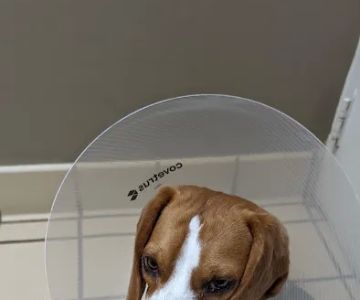Understanding Separation Anxiety in Pets
As a pet owner, you may have noticed your furry friend acting out when you leave the house. From excessive barking to destructive behavior, separation anxiety is a common issue that affects pets, especially dogs. It can be heart-wrenching to witness your pet in distress, but the good news is that with the right understanding and approach, you can help alleviate their anxiety. In this article, I’ll walk you through the causes of separation anxiety and share some proven strategies that have helped me and many others.
1. Recognizing the Signs of Separation Anxiety
Before we dive into solutions, it’s important to first identify if your pet is truly suffering from separation anxiety. While some behavior may seem like normal pet antics, there are specific signs to watch for. Common behaviors include:
- Excessive barking, whining, or howling when you leave
- Destructive behavior, such as chewing furniture or scratching doors
- Excessive drooling or pacing
- Accidents in the house despite being house-trained
If your pet displays several of these symptoms when left alone, it’s likely that separation anxiety is the culprit. It’s important to remember that pets don’t intentionally misbehave to upset you; rather, they are responding to their fear and anxiety when separated from their owners.
2. Causes of Separation Anxiety in Pets
Understanding the root causes of separation anxiety can help in addressing the problem. Separation anxiety often occurs when a pet forms a strong bond with its owner and experiences distress when separated. Some contributing factors include:
- Changes in routine: A sudden shift in daily activities, such as a change in work schedule, can trigger anxiety.
- Past trauma: Pets that have experienced abandonment or a lack of socialization may be more prone to anxiety.
- Age: Puppies and senior pets may be more sensitive to changes in their environment and routine.
Being aware of these factors can help you address the anxiety more effectively, as you may need to adapt your approach based on the underlying cause.
3. Gradual Desensitization: A Key Strategy
One of the most effective methods for dealing with separation anxiety is gradual desensitization. This approach involves slowly getting your pet used to being alone in small increments. Here’s how to implement it:
- Start by leaving your pet alone for short periods of time, just a few minutes, and gradually increase the duration.
- During these short absences, give your pet a distraction, such as a chew toy or puzzle feeder, to keep their mind occupied.
- Gradually make the departure process less dramatic by avoiding long goodbyes and greetings when you return.
By taking these small steps, your pet will start to associate being alone with calmness and comfort rather than anxiety.
4. Providing Comforting Aids
In addition to behavioral modifications, there are several calming aids that can help ease your pet’s anxiety. These include:
- Calming collars or wraps: Products like the Thundershirt can provide gentle pressure to help soothe anxious pets.
- Aromatherapy: Essential oils such as lavender or chamomile can help calm your pet. Be sure to use them safely, as some oils can be harmful to pets.
- Pet-specific calming music or videos: Some pets respond well to calming sounds or visual stimuli, such as videos designed to soothe anxious animals.
While these aids are not a substitute for behavior training, they can offer immediate relief for your pet during the training process.
5. Seeking Professional Help: When to Call in the Experts
If your pet’s separation anxiety is severe or persistent, it may be time to consult with a professional. A veterinarian or a certified animal behaviorist can provide tailored advice and treatment plans. In some cases, medication may be prescribed to help manage your pet’s anxiety while you work on training and behavior modification. It’s important to remember that dealing with separation anxiety is often a gradual process, and professional guidance can speed up the improvement.
6. The Importance of Consistency and Patience
One of the most important aspects of managing separation anxiety in pets is consistency. It can be frustrating, especially when you don’t see immediate results. However, by staying patient and consistent with training, you will help your pet feel more secure and less anxious when left alone. The key is to create positive associations with your absence, so your pet doesn’t perceive it as a stressful event.
Conclusion: Helping Your Pet Overcome Separation Anxiety
Dealing with separation anxiety in pets requires a combination of understanding, patience, and strategic training. By recognizing the signs, understanding the causes, and implementing desensitization techniques, you can significantly reduce your pet’s anxiety. Using comforting aids and seeking professional help when necessary will further support your pet’s progress. Remember, the goal is to help your pet feel secure, even when you’re not around. If you’re struggling with this issue, consider visiting [Hidden Brook Veterinary] for professional assistance and expert advice on managing your pet’s separation anxiety.











